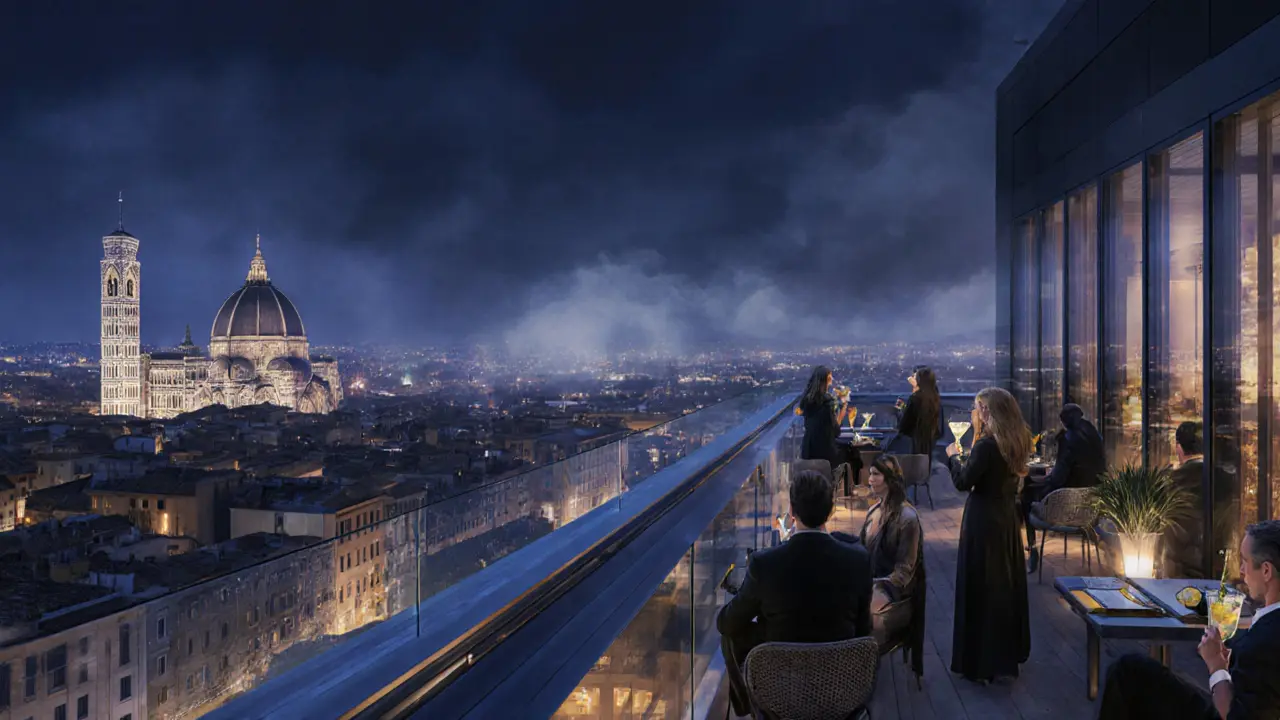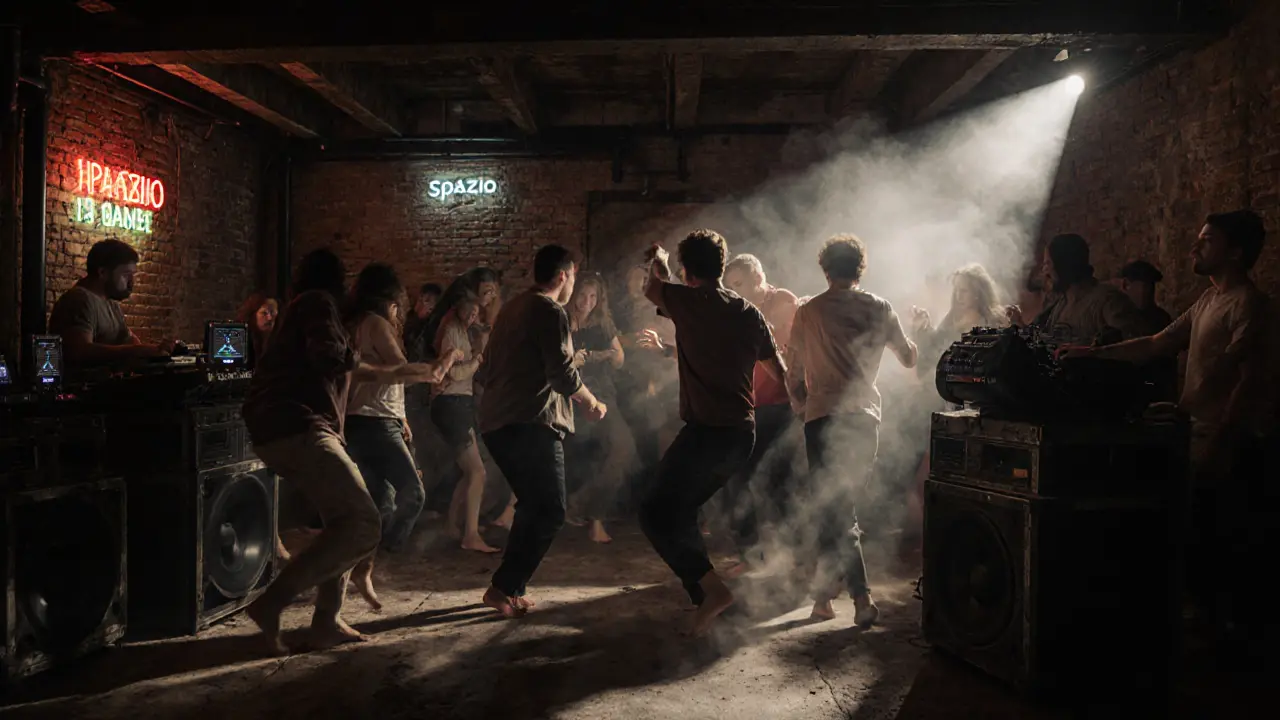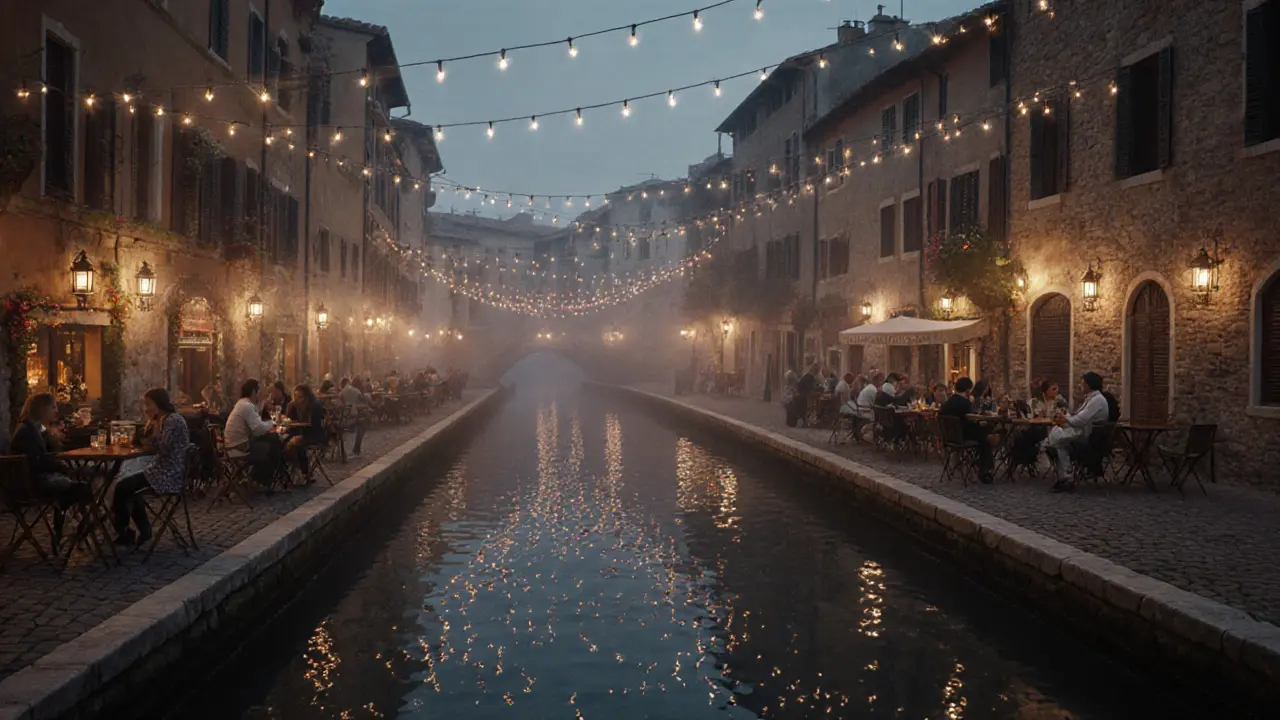Milan by Night: The Ultimate Guide to the City's Best Nightlife Spots

When the sun sets over Milan’s fashion district, the city doesn’t sleep-it wakes up. Forget the daytime rush of designers and shoppers. At night, Milan transforms into a pulsing mix of sleek cocktail lounges, underground jazz dens, rooftop bars with skyline views, and clubs where the beat doesn’t stop until dawn. This isn’t just partying. It’s a cultural ritual, shaped by Italian style, local pride, and a deep love for good company and even better drinks.
Where the Locals Go After Dinner
If you want to experience Milan’s nightlife like someone who actually lives here, start where the Italians do: the aperitivo. Between 7 and 9 p.m., bars across the city flip from wine-and-snack mode into full evening mode. For under €15, you get a drink-usually a Spritz, Negroni, or Aperol-and a buffet of cold cuts, cheeses, arancini, and mini sandwiches. It’s not a snack. It’s dinner.
Head to Bar Basso in the Brera district. This is where the Negroni was invented in 1919. The place hasn’t changed much: dark wood, red leather stools, and bartenders who know your name by the third visit. Or try Bar Longhi near the Galleria Vittorio Emanuele II. It’s quieter, more refined, and the aperitivo spread is legendary. Locals come here after work to unwind, not to be seen.
Don’t expect loud music or flashing lights. Milan’s aperitivo scene is about conversation, not competition. The goal isn’t to get drunk-it’s to linger, laugh, and enjoy the rhythm of the evening.
The Club Scene: From Hidden Basements to Glamorous Lounges
Once the aperitivo ends, the real night begins. Milan’s club scene splits into two worlds: the glamorous and the gritty.
For glamour, Le Jockey in Porta Venezia is the place. Think velvet booths, mirrored ceilings, and a crowd that dresses like they’re walking a runway. It’s not cheap-cover charges start at €25-but the music is curated by international DJs and the vibe is pure Milanese excess. You’ll see models, artists, and tech founders all dancing under the same disco ball.
But if you want something rawer, head to Spazio 104 in the Niguarda neighborhood. This isn’t a club. It’s an old factory turned experimental music space. No VIP section. No dress code. Just industrial beats, live electronic acts, and a crowd that’s here for the sound, not the status. The door opens at midnight. You’ll find it by the line snaking down the alley.
There’s also Teatro degli Arcimboldi, a converted theater that hosts weekly club nights with DJs from Berlin, London, and Tokyo. It’s not in the center, but the train ride from Centrale Station takes less than 15 minutes. The sound system alone is worth the trip.
Rooftop Bars: Milan’s Skyline, One Drink at a Time
Nothing says Milan like a drink with the Duomo in the background. Rooftop bars here aren’t just about the view-they’re about the silence between the music, the way the city lights reflect off the glass towers, and the feeling that you’re floating above it all.
Terrazza Aperol on top of the Grattacielo Pirelli is the classic choice. Open since 2017, it’s where Milanese professionals go to celebrate promotions, proposals, or just the end of a long week. The cocktails are simple: gin and tonic, prosecco, or a perfectly balanced Aperol Spritz. The crowd? Mostly locals in tailored coats and silk scarves.
For something newer, try Skyline Rooftop Bar at the Mandarin Oriental. It’s quieter, more intimate, and the mixologists here make drinks using local herbs like bergamot and wild rosemary. The view stretches from the Brera district to the towers of Porta Nuova. It’s not the cheapest option-drinks start at €18-but it’s the most unforgettable.
Pro tip: Book ahead. These spots fill up fast, especially on weekends. Walk-ins are welcome, but you might end up waiting an hour for a table.

Live Music: Jazz, Indie, and Underground Beats
Milan doesn’t just have clubs. It has a deep, quiet love for live music. You don’t need to be a music nerd to appreciate it-you just need to be willing to step off the main drag.
Blue Note Milano is the city’s most famous jazz spot. It’s modeled after the New York original and brings in artists from across Europe. The seating is tight, the lighting is dim, and the sound is pure. You’ll hear saxophones that sound like they’re breathing, and pianists who play like they’re telling secrets.
For indie rock and emerging bands, Alcatraz in the Lambrate district is the go-to. It’s a converted warehouse with a stage that’s seen acts from Italy, Sweden, and Brazil. The crowd is young, the beer is cheap, and the energy is electric. Shows start at 10 p.m. and often run past 2 a.m.
And then there’s La Scala’s Night Sessions. Yes, the opera house. Once a month, after the final curtain falls, they open the auditorium for experimental electronic sets and ambient soundscapes. Tickets sell out weeks in advance. It’s not a club. It’s a sacred space turned surreal.
What to Avoid in Milan’s Nightlife
Not every place labeled "nightlife" in Milan deserves your time.
Avoid the tourist traps near the Duomo after 11 p.m. Bars like La Baita or Harry’s Bar overcharge for watered-down drinks and play American pop on loop. Locals know better. They’ll tell you: if it looks like a pub from the 1990s and has a sign in English, walk away.
Also, don’t expect 24-hour partying. Most clubs close by 3 a.m. And if you’re looking for a late-night kebab or pizza slice, you’ll find it-just not in the fashion district. Head to Trattoria da Buratti near the Central Station. Open until 4 a.m., it serves the best arancini in the city.
And never, ever try to haggle on prices. Milanese pride runs deep. A €20 cocktail isn’t expensive-it’s an investment in the experience. If you’re not willing to pay for it, don’t order it.

Getting Around After Dark
Milan’s public transport runs until 1:30 a.m. on weekdays and 2:30 a.m. on weekends. The metro is clean, safe, and efficient. Lines M1 and M3 connect the main nightlife zones: Brera, Porta Venezia, Navigli, and Porta Nuova.
After the metro stops, taxis are easy to find. Use the official app FreeNow or flag down a white cab with a green light on top. Avoid unmarked cars. Uber doesn’t operate here, and ride-sharing apps are unreliable.
Walking is fine in the center-Milan is compact and well-lit. But if you’re heading to Lambrate or Niguarda, take a cab. The streets are quiet, and the neighborhoods aren’t always safe after midnight.
When to Go
Weekends are the busiest. Friday and Saturday nights are packed, especially in July and August when locals return from the coast. But if you want to feel like a local, go on a Tuesday or Wednesday. The crowds thin out, the music gets better, and the bartenders have more time to chat.
Summer (June-August) means open-air clubs along the Navigli canals. Winter (December-February) brings cozy jazz lounges and candlelit aperitivos. Spring and fall are perfect-cool enough to wear a jacket, warm enough to sit outside.
Don’t come in January unless you’re ready for silence. Most Milanese take a break after New Year’s. The city feels empty. But if you do, you’ll have the whole nightlife scene to yourself.
Final Tip: Dress Like You Belong
Milan is Italy’s fashion capital for a reason. You don’t need to wear Gucci to get in-but you do need to look like you care.
Men: Dark jeans, clean sneakers or loafers, a button-down or slim-fit sweater. No shorts. No baseball caps. No flip-flops.
Women: A little black dress, tailored trousers, or a silk top with heels. Avoid sportswear. Even if you’re just going for a drink, look intentional.
It’s not about being rich. It’s about being respectful. Milan doesn’t judge you for where you’re from. But it will notice if you show up looking like you just rolled out of bed.
What time do bars and clubs open in Milan?
Bars start serving aperitivo around 7 p.m., and most clubs open between 11 p.m. and midnight. Some underground venues like Spazio 104 don’t open until midnight. Most places close by 3 a.m., though a few clubs in Porta Venezia stay open until 4 a.m. on weekends.
Is Milan’s nightlife safe at night?
Yes, Milan is one of the safest major European cities at night. The center and popular nightlife districts like Brera, Porta Venezia, and Navigli are well-lit and patrolled. Avoid isolated streets after 2 a.m., especially in less touristy areas like Lambrate or Baggio. Stick to main roads and use official taxis if you’re unsure.
Do I need to book ahead for rooftop bars or clubs?
For rooftop bars like Terrazza Aperol or Skyline, yes-especially on weekends. Book at least a day in advance through their websites. For clubs, it depends. Popular spots like Le Jockey often require reservations. Smaller venues like Alcatraz or Spazio 104 usually don’t, but lines form fast. Arrive early if you want to get in without waiting.
What’s the dress code in Milan’s nightlife?
Dress well, but not overdressed. Men should avoid shorts, flip-flops, and sportswear. Women should skip athletic wear. Dark jeans, a nice top, and clean shoes work everywhere. Clubs like Le Jockey may turn you away for looking too casual. Rooftop bars are more relaxed but still expect effort. When in doubt, lean toward smart-casual.
Can I find vegan or vegetarian options in Milan’s nightlife?
Absolutely. Most aperitivo bars now offer vegan platters with plant-based cheeses, roasted vegetables, and gluten-free crostini. Clubs like Alcatraz and Spazio 104 have vegan snack stands. Even high-end spots like Skyline Rooftop Bar can accommodate dietary needs if you ask in advance. Milan is one of the most vegan-friendly cities in Europe.
What’s the best way to pay in Milan’s bars and clubs?
Cash is still king in smaller venues, especially for cover charges and drinks at underground clubs. Most rooftop bars and tourist spots accept cards, but always carry €20-€50 in cash. ATMs are everywhere, but avoid those inside train stations-they charge high fees. Use bank ATMs instead.
Are there any free nightlife events in Milan?
Yes. Many jazz clubs like Blue Note Milano offer free entry on Monday nights. Art galleries in Brera sometimes host live music after hours with no cover. The Navigli district holds free open-air cinema nights in summer. Check local listings on Extramilano or Time Out Milan for weekly free events. You don’t need to spend money to experience Milan’s soul.

